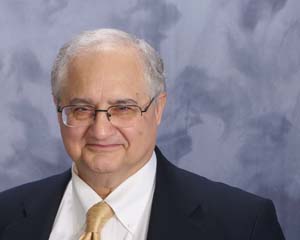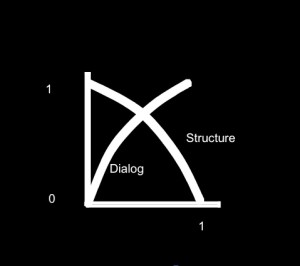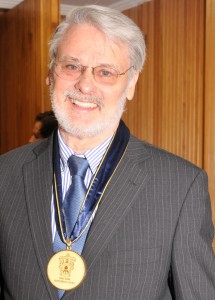Instructional Design in Distance Education: An Overview
Farhad Saba, Ph. D.
Founder and Editor, Distance-Educator.com
In this series of articles, I presented several issues that are challenging the future of higher Education. I also have been providing a systems approach for planning and managing distance education systems, as each educational institution is different and should develop its unique strategy and plan to extend educational opportunities to its students. In this article I will continue with an overview of instructional design in distance education; a subject that will be discussed in detail in future articles in this series.
Traditionally, distance education has been defined in terms of the separation of the instructor from the learner in time and space. (Keegan, 1993). While this definition of distance education is true, it is not inclusive enough to illuminate the role of distance and time as design factors for creating instruction. In other words, varying the distance between the learner and the instructor does not seem to have an appreciable effect on the quality of teaching and learning. This is true even when the learner and teacher are under the same roof. Bringing the learner closer to the teacher, barring learner visual or auditory impairment, does not seem to have an appreciable effect on the quality of learning despite the knowledge claim that the so-called face-to-face education (which remains to be operationally undefined) is superior than distance education.
Since varying physical distance was not an adequate explanation to move our understanding about distance education further, additional clarifications were necessary. Moore’s (1983) theory of transactional distance broadened the horizon for the field and opened the way to conceptualizing distance as a variable which changes over time as an instructional session progresses. This implied that distance in education is a psychological construct and not a geographic one. In his early studies as well as later explanation of the theory of transactional distance (Moore, 2013) stated that distance in education, or transactional distance, is a psychological construct that depends on three variables (“macro factors”) of dialog, structure and autonomy.
These design factors, however, can be implemented in educational organizations with a management structure at the Educational Systems Level which are conducive to personalized instruction, since “distance” in education differs for each individual learner at each moment in time.
“Dialogue describes the extent to which, in any educational programme, learner and educator are able to respond to each other. This is determined by the content or subject matter which is studied, by the educational philosophy of the educator, by the personalities of educator and learner, and by environmental factors, the most important of which is the medium of communication” (Moore 1983, p. 157). And Structure is a measure of an educational programme’s responsiveness to learner’s individual needs. It expresses the extent to which educational objectives, teaching strategies and evaluation methods are prepared for, or can be adapted to the objectives, strategies, and evaluation methods of the learner. In a highly structured educational programme, the objectives and the methods to be used are determined for the learner and are inflexible. (Moore, 1983 p. 157)
Autonomy refers to the extent to which learners decide on certain factors such as “what to learn, how to learn, and how much to learn.” (Moore 2013, p 68). Moore posited that adult learners tend to set their own learning goals and pursue achieving such goals on their own. He set forward two kinds of autonomy – emotional and instrumental- and defined them as follows:
Instrumental independence involves the ability to undertake an activity, including learning, without seeking help; emotional independence is the capacity to pursue the activity without seeking reassurance, affection or approval in order to complete it. The drive to achievement is derived from a need for self-approval. (p. 162)
These design factors, however, can be implemented in educational organizations with a management structure at the Educational Systems Level which are conducive to personalized instruction, since “distance” in education differs for each individual learner at each moment in time. As we will demonstrate below, each individual learner has a certain need for structure, and dialog and autonomy; and as such, the one-size-fits all lecture format is woefully inadequate to meet the needs of the individual learner.
Realizing that dialog structure and autonomy determine the degree of separation between the learner and the educator in time and space, Moore defined transactional distance as a function of these three variables. He explained: “In a programme in which there is little structure, and dialogue is easy, interaction between learner and teacher permits very personal and individual learning and teaching.”
Using the variables dialogue and structure, Moore proposed four possible sets to classify individual learning programmes:
– D – S 1. Programs with no dialogue and no structure
– D + S 2. Programs with no dialogue but with structure
+ D + S 3. Programs with dialogue and structure
+ D – S 4. Programs with dialog and no structure
Viewing distance and time as variables that can and should change depending on the requirements of the instructor for structure and the needs of the learner for dialog, had major theoretical and practical ramifications.
- Moore shifted the concept of distance in education from its grounding in physical science to social science. In the physical science paradigm, distance in education is conceptualized as a pre-determined and fixed geographical separation measured in miles and kilometers. Transactional distance, defined by the relationship between the teacher and the learner, is measured in terms of dialog, structure and autonomy.
- Such relationship was evident in mass distance education systems, where the same educational message was distributed to many students via radio or television; the predecessors for most of the MOOCs today (high structure). However, with the advent of the computer it became much easier to individualize instruction and with the computer/telecommunication nexus, there is the potential to extend customized (personalized, and individualized) education to learners.
- The theory of transactional distance coupled with the theory of community of inquiry (Garrison and Akyol, 2013) explains the relationship between the learner and the instructor as well as among learners.
- These theories are explanations of Instructional Systems Levels. Their full implementation will not be possible unless certain changes also occur in the Educational Systems Level in which the management sub-systems and processes of institutions reside. The inter-relationship of these two system levels precludes the implementation of a system of education that is highly responsive to the needs of each learner in terms of dialog, structure, and autonomy in an institution with a management system that is designed for mass education is not possible.
- Moore proposed the concept of transactional distance in the tradition of distance education theorists that had always put the learner at the center of attention. As the third wave civilization approached, Moore emphasized the theoretical importance of individual differences and the “uniqueness of the individual” learner. An important dimension of personalized learning is the degree of autonomy exercised by learners. The primacy of the individual over the mass movement of the second wave civilization, as Toffler indicated, is a major area of friction between the industrial age, and the post-industrial era that is emerging now. Education is one of the primary arenas in which the second wave is clashing with the third wave civilization. Issues, such as, providing easier access to education, reducing its cost, and improving its quality that we have indicated in Chapter One will not be resolved unless the concept of distance education as a third wave post-industrial and post-modern (in the sense of William James’ concept of Pragmatism) is accepted and implemented.










